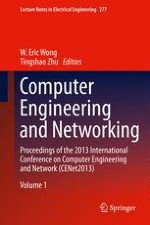2014 | Buch
Computer Engineering and Networking
Proceedings of the 2013 International Conference on Computer Engineering and Network (CENet2013)
herausgegeben von: W. Eric Wong, Tingshao Zhu
Verlag: Springer International Publishing
Buchreihe : Lecture Notes in Electrical Engineering
